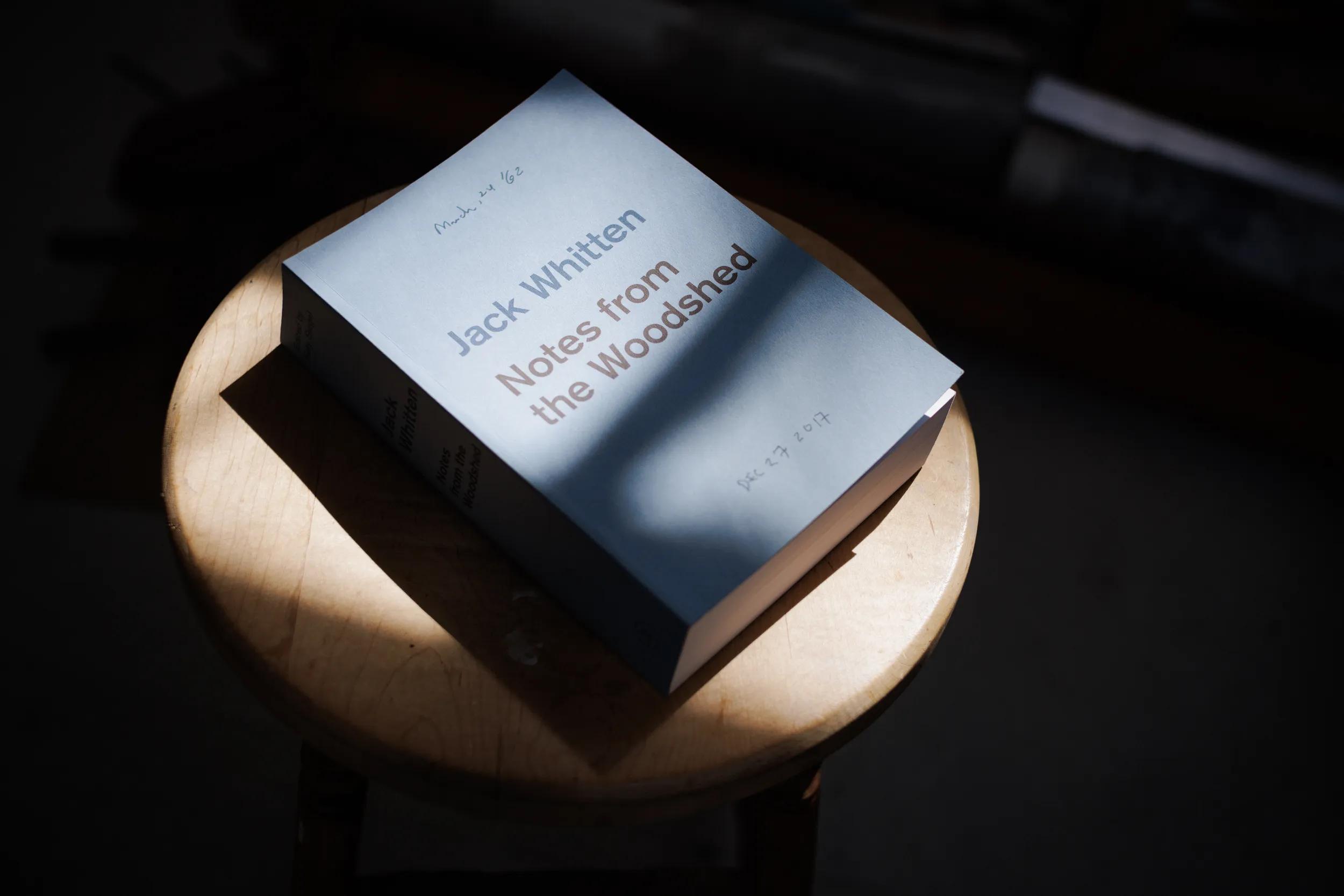Books
Painting Is a Gift
Angel Otero reads from Jack Whitten’s Notes from the Woodshed
Like many artists, Jack Whitten used writing to process and engage with his art and the world around it. From detailed daily logs to longer essays, published statements and public talks, Whitten’s writing tells a story of artistic growth through experimentation, and of his path to a meaningful and expansive creative life.
To mark the release of a new edition of the celebrated Notes from the Woodshed from Hauser & Wirth Publishers, Ursula invited Angel Otero, artist and friend of Whitten, to select and read an excerpt inside the late artist’s studio. Like Whitten, Otero’s creative practice is built on a foundation of technical experimentation, testing the boundaries of traditional painting.

Whitten’s handwritten note from November 12, 1978. Photos: Alex Munro

Jack Whitten: Notes from the Woodshed, Hauser & Wirth Publishers, 2025
“I am the recipient of visual messages,” writes Whitten. “Where these messages come from, I do not know.” Ranging from personal expression to mechanical automation, the innovative works from the artist’s six-decade-long career transmitted the very things he could not put into words. In his note from November 1978, Whitten searches for connections: “If I am able to locate objects in space I am able to locate myself.”
–
First published in 2018 and edited by art historian Katy Siegel, the new edition of Jack Whitten: Notes from the Woodshed presents a fully transcribed collection of Whitten’s writings, alongside a new conversation between curators Matilde Guidelli-Guidi and Zoé Whitley and artist Glenn Ligon.
“Jack Whitten: The Messenger,” the first retrospective dedicated to all six decades of Whitten’s innovative practice, is on view at the Museum of Modern Art through August 2, 2025.
